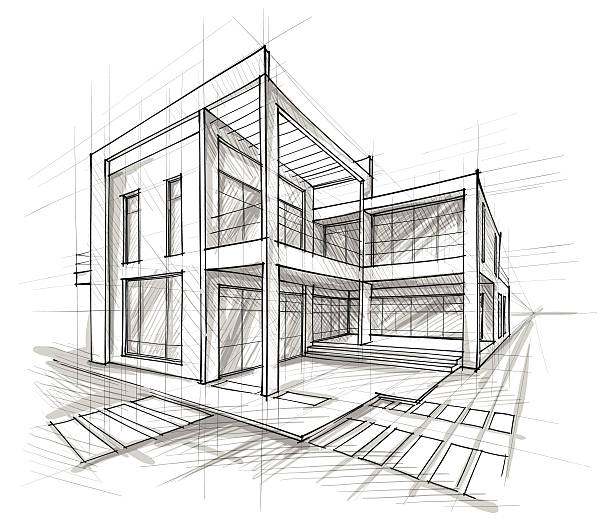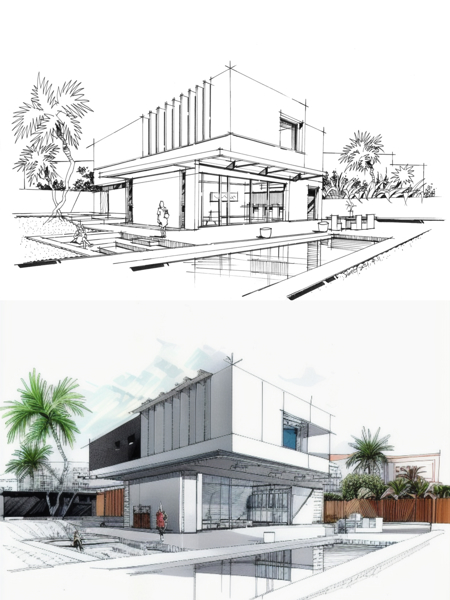Check Out Acclaimed Jobs by Distinguished CDA Architects
Check Out Acclaimed Jobs by Distinguished CDA Architects
Blog Article
Recognizing the Collaborative Process Between Engineers and Engineers in Modern Building Projects
The joint procedure between architects and engineers is essential in modern-day building and construction jobs, as it balances design intent with engineering usefulness. Discovering these characteristics exposes insights that could significantly impact task end results and total market requirements.
The Importance of Collaboration
The joint harmony between architects and designers is crucial for the effective awareness of any building and construction task. This partnership brings together distinctive experience and point of views, enabling the integration of cutting-edge style with practical design solutions. By collaborating, engineers and engineers can ensure that a job not only fulfills visual and useful requirements yet likewise abides by safety and security, sustainability, and financial constraints.
Collaboration promotes a shared vision, facilitating the alignment of objectives and assumptions from the start. This positioning is important in dealing with possible obstacles and mitigating dangers that could arise during the job lifecycle. Moreover, a collaborative method enables for the efficient allotment of resources, maximizing both time and cost.
The value of cooperation reaches the iterative process of style and building and construction, where feedback from engineers can notify architectural choices, bring about even more feasible and sustainable designs. On the other hand, designers can motivate designers to assume artistically about how to achieve structural stability without jeopardizing creative intent. Eventually, the joint partnership in between designers and designers is not simply helpful; it is basic to the production of high-quality, useful, and innovative built settings that fulfill the demands of culture.
Interaction Strategies and Devices
Efficient communication techniques and tools are vital for fostering cooperation in between designers and engineers throughout the project lifecycle. Establishing clear networks of interaction is vital to make sure that all group members are aligned with task goals, timelines, and obligations. Routine meetings, both in-person and virtual, give possibilities for stakeholders to talk about progress, address concerns, and make informed choices.

Additionally, embracing joint communication tools, such as Slack or Microsoft Teams, permits for instant messaging, data sharing, and recurring discussions, promoting an extra agile action to arising issues. File monitoring systems also play a vital role in organizing job documents, guaranteeing that all staff member have accessibility to the current info.
Shared Objectives and Task Vision
An unified job vision acts as the structure for effective collaboration between designers and designers (cda architects). This common vision not just straightens the initiatives of both parties but also establishes a typical framework for decision-making throughout the job's lifecycle. By verbalizing clear objectives, stakeholders can properly navigate the complexities of modern construction projects, guaranteeing that both aesthetic and practical demands are satisfied
Establishing shared goals involves why not find out more open dialogue and a complete understanding of each discipline's contributions. Engineers commonly concentrate on design intent, spatial relationships, and individual experience, while designers emphasize structural honesty, systems capability, and compliance with laws. When these viewpoints are aligned, the result is a natural job that complies with both innovative ambitions and technological expediency.
Furthermore, a well-defined project vision cultivates responsibility among employee, motivating each participant to take possession of their function in achieving the wanted end result. Routine check-ins and collaborative workshops can further enhance this commitment, permitting changes to be made as the job develops. Inevitably, a common vision not only boosts team effort but additionally elevates the top quality of the final deliverable, leading click here for more to effective project conclusion.
The Function of Technology
Leveraging modern technology has come to be necessary in enhancing cooperation between engineers and engineers. The assimilation of sophisticated software devices helps with real-time interaction and information sharing, making it possible for teams to function more successfully and efficiently. Structure Information Modeling (BIM) attracts attention as a critical modern technology, enabling both engineers and engineers to produce thorough 3D designs that envelop design intent and structural honesty. This shared aesthetic representation lessens misconceptions and enhances the decision-making process.
In addition, cloud-based systems make it possible for smooth cooperation, enabling job stakeholders to gain access to and update job data from anywhere. This promotes a culture of transparency and accountability, as adjustments can be tracked and assessed in real-time. In addition, mobile applications additional improve communication, offering on-site teams with immediate accessibility to task specs and updates.
Emerging innovations such as synthetic intelligence and artificial intelligence are additionally beginning to contribute in predictive evaluation, aiding teams identify potential concerns prior to they develop. Eventually, the duty of innovation in architecture-engineering collaboration not just enhances workflow efficiencies yet also boosts advancement, resulting in even more successful task results. By welcoming these technological innovations, designers and designers can make sure a more natural and productive collective procedure throughout the building and construction lifecycle.
Case Researches in Successful Collaborations
Numerous situation studies show the extensive impact of efficient collaborations between engineers and engineers on job end results. One noteworthy instance is the collaboration on the High Line in New York City City, where landscape engineers, engineers, and metropolitan planners interacted to change an abandoned railway right into Check Out Your URL a vibrant public park. This multidisciplinary method not just enhanced the aesthetic high quality yet also guaranteed architectural safety and security and environmental sustainability.

The Burj Khalifa in Dubai even more shows the importance of joint efforts - cda architects. The assimilation of architecture and design proficiency enabled the project group to attain extraordinary elevations while adhering to security guidelines and aesthetic vision
These examples emphasize the relevance of communication, count on, and shared purposes. In today's complex building and construction environment, such partnerships are important to navigating obstacles and delivering jobs that satisfy both useful and visionary goals.
Conclusion
Finally, the partnership between architects and engineers is vital for the success of contemporary construction projects. Effective communication methods, a shared task vision, and the combination of advanced innovations are essential elements that promote this partnership. By cultivating a culture of liability and leveraging devices such as Building Details Modeling (BIM), teams can browse project complexities, making certain that aesthetic, useful, and sustainability objectives are attained. Ultimately, this harmony leads to ingenious and effective project results.
Report this page